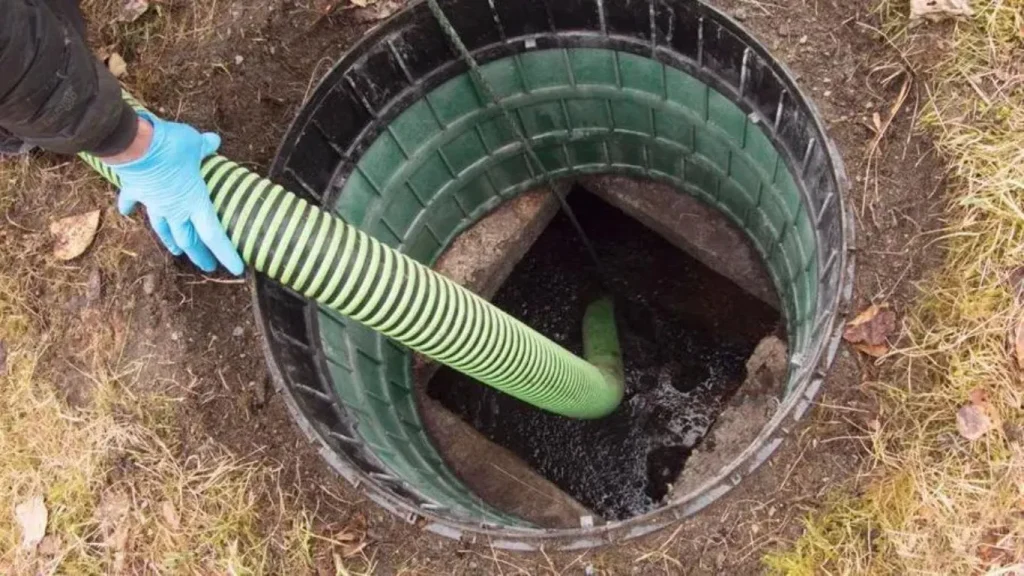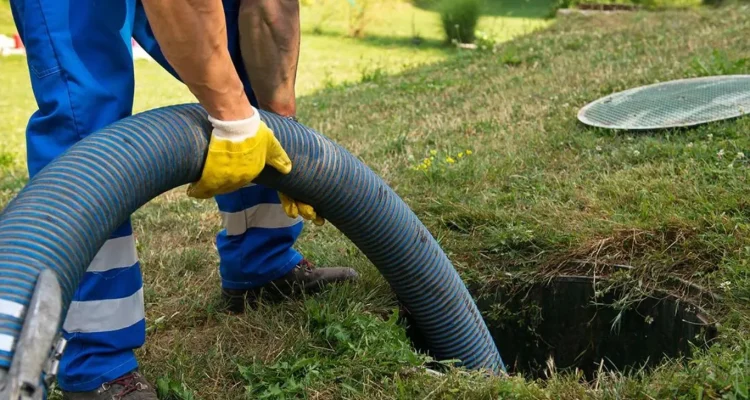Introduction
Maintaining your septic tank is crucial for ensuring a healthy and functional household plumbing system. Regular pumping of your septic tank prevents unpleasant backups, foul odors, and costly repairs. In this guide, we’ll walk you through everything you need to know about how to pump a septic tank, whether you’re doing it yourself or considering professional help.

Understanding Your Septic Tank
What is a septic tank?
A septic tank is an underground chamber made of concrete, fiberglass, or plastic, through which domestic wastewater flows for basic treatment. It separates solid waste from liquid, allowing the solid waste to settle and be partially decomposed by anaerobic bacteria.
How does a septic tank work?
Wastewater from your home enters the septic tank and divides into three layers: solids (sludge) settle at the bottom, oils and grease (scum) float to the top, and the middle layer contains partially clarified wastewater (effluent). The effluent exits the tank into a drain field for further filtration.
Signs that your septic tank needs pumping
- Slow drains and toilets
- Unpleasant odors around your property
- Pooling water or lush grass over the drain field
- Sewage backup in your home
When to Pump Your Septic Tank
Recommended pumping frequency
It’s generally recommended to pump your septic tank every 3-5 years. However, this can vary based on the size of your tank, the number of occupants in your home, and your water usage habits.
Factors influencing pumping schedule
- Tank size: Larger tanks require less frequent pumping.
- Household size: More occupants generate more wastewater.
- Water usage: High water usage can fill the tank faster.
- Waste composition: Non-biodegradable items can accumulate and require more frequent pumping.
Preparation for Pumping
Locating your septic tank
The first step is to locate your septic tank. Most tanks are buried in the yard, and their location can often be found on the property plans or through a site inspection.
Gathering necessary tools and equipment
You’ll need:
- A septic tank map or location guide
- Protective gloves and clothing
- A garden hose
- A sludge judge or similar tool to measure sludge depth
- A septic tank pump (if doing it yourself)
Ensuring safety measures
- Wear protective gear to avoid exposure to harmful bacteria.
- Ensure proper ventilation if you need to enter the area around the tank.
- Keep children and pets away from the work area.
Step-by-Step Guide to Pumping Your Septic Tank
Step 1: Locate the tank access points
Find the access points to your septic tank, typically manhole covers or access ports on the tank lid.
Step 2: Remove the access covers
Carefully remove the covers, being cautious of any harmful gases that may escape.
Step 3: Inspect the tank
Use a sludge judge to measure the depth of the sludge and scum layers. This will help you determine how much waste needs to be pumped out.
Step 4: Pump out the contents
Using a septic tank pump, remove the sludge, scum, and effluent from the tank. Make sure to pump out the entire contents to ensure thorough cleaning.
Step 5: Clean the tank
Rinse the inside of the tank with a garden hose to remove any remaining waste. Inspect for any cracks or damage that may need repair.
Step 6: Replace the access covers
Once the tank is clean, securely replace the access covers to prevent any debris or water from entering the tank.
Post-Pumping Maintenance
Checking for leaks and damages
After pumping, inspect the tank and surrounding area for any leaks or damages. Address any issues immediately to avoid future problems.
Scheduling the next maintenance
Set a reminder for your next septic tank pumping based on the recommended schedule and your observations during this pumping.
Tips for prolonging the time between pumpings
- Avoid flushing non-biodegradable items.
- Conserve water to reduce the load on your septic system.
- Use septic-safe cleaning products.
Professional vs. DIY Pumping
Pros and cons of hiring a professional
Pros:
- Professionals have the right equipment and expertise.
- They can identify and fix any potential issues during the pumping process.
- It saves you time and effort.
Cons:
- It can be more expensive than doing it yourself.
Cost considerations
The cost of professional septic tank pumping varies but typically ranges from $200 to $600, depending on the size of the tank and your location.
DIY pumping: Is it worth it?
If you have the right equipment and are comfortable handling the task, DIY pumping can save you money. However, it’s important to follow all safety protocols and ensure thorough cleaning.
Common Problems and Solutions
Blockages and backups
Regular pumping and avoiding non-biodegradable items can prevent blockages and backups. If you experience these issues, contact a professional.
Foul odors
Foul odors can indicate a full tank or a problem with your septic system. Regular maintenance and proper ventilation can help.
Overflow issues
Overflowing septic tanks can cause significant damage to your property. Regular pumping and monitoring can prevent this.
Environmental Considerations
Proper disposal of septic waste
Septic waste should be disposed of at a certified facility to prevent environmental contamination.
Environmental impact of septic tank maintenance
Regular maintenance ensures that your septic system operates efficiently, reducing the risk of groundwater contamination and environmental damage.
FAQs
How often should I pump my septic tank?
You should pump your septic tank every 3-5 years, depending on the size of your tank and household usage.
What are the signs that my septic tank needs pumping?
Slow drains, foul odors, pooling water, and sewage backups are common signs that your septic tank needs pumping.
Can I pump my septic tank myself?
Yes, you can pump your septic tank yourself if you have the right equipment and follow all safety protocols. However, hiring a professional is often recommended.
What should I do if my septic tank overflows?
If your septic tank overflows, contact a professional immediately to address the issue and prevent property damage.
How can I maintain my septic tank between pumpings?
Avoid flushing non-biodegradable items, conserve water, and use septic-safe cleaning products to maintain your septic tank between pumpings.
Conclusion
Regularly pumping your septic tank is essential for maintaining a healthy and efficient wastewater system. Whether you choose to hire a professional or do it yourself, following these guidelines will help you keep your septic system in top shape, preventing costly repairs and ensuring a clean and safe environment for your home.


Congratulation!